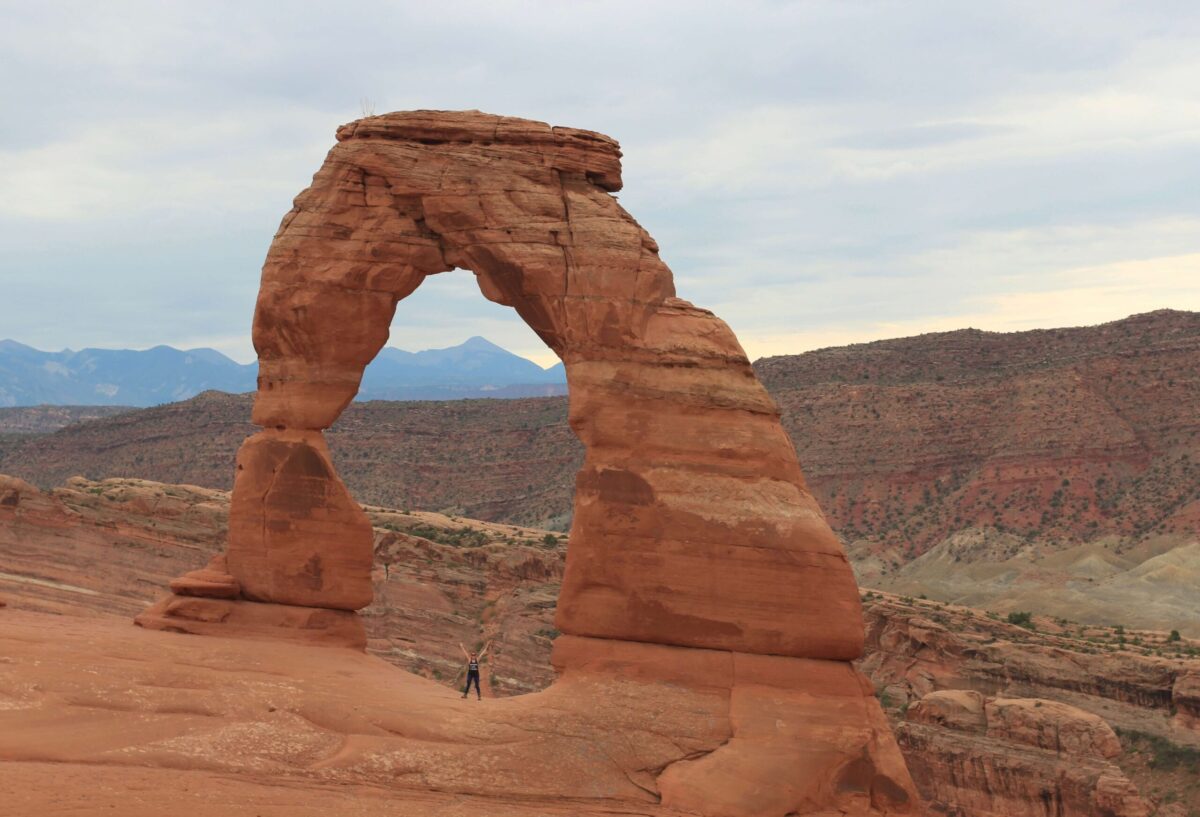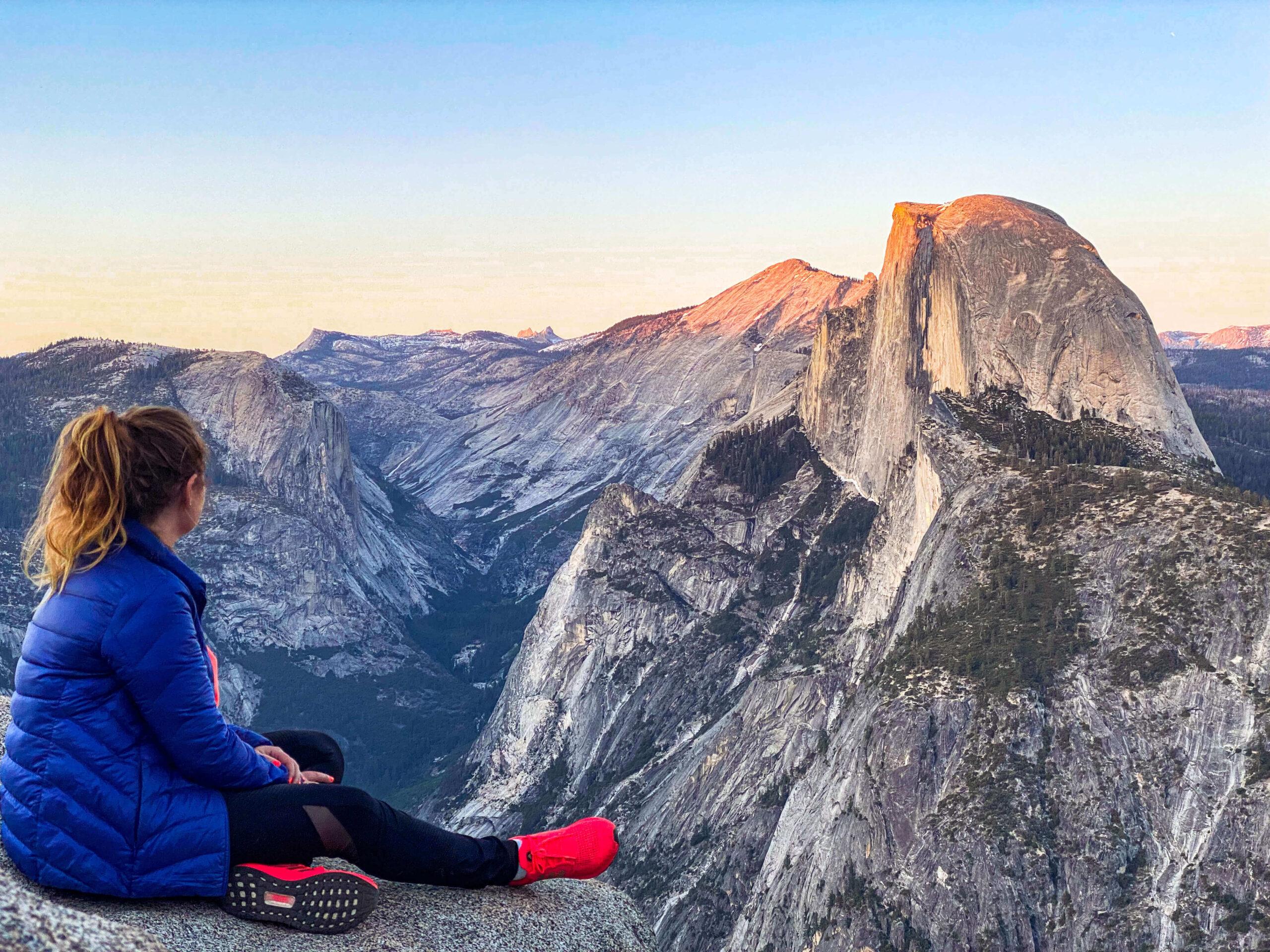
Destinations
US National Parks - Planning your trip
There’s no better place to recharge your batteries and find inner peace than a natural environment. From endless outdoor recreation opportunities to spectacular landscapes, we invite you to join us on the adventure and collect a lifetime worth of national park experiences! There are more than 400 national parks in the United States. No feeling in the world can replace the sensation of being in touch with nature and enjoy the beautiful scenic drives to these remote corners of preserved natural wonders. Check here all our tips to get you started.

Know before you go
Prepare your vehicle - National Parks are often located in remote areas and you must be sure your vehicle has a full tank of gas and and is fully serviced before you start your adventure.
When driving, always be aware about what you leave inside of your car. At Yosemite, bears can break your can when looking for food and you will receive fines in case this happens. Remember also to peek underneath your car before you drive away. In the Joshua Three, for instance, desert tortoises sometimes seek shade under parked cars.
Lodging - Most parks offer different options of hotels inside of the parks. However, rooms fill up fast, so reserve in-park lodgings far in advance. Also, be aware that lodging and camping options are sprinkled throughout the 50-mile stretch from the main entrances in most cases. In addition to find more options, hotels in the cities around used to be more affordable. It's common to stay outside the park and do day trips to visit the top attractions during the day.
Note that you don't need a day-use reservation if you have lodging or camping reservations inside the park or even if you have any specific hiking or wilderness backpacking permit, or if you ride into the park in a YARTS bus or with a licensed commercial guide. In case you cannot get the day-use for the dates you wish, pay a little bit more to book a hotel inside of the park can be an alternative.
You can book in-park campsites at recreation.gov.
Download directions - You may not have cellphone service or WiFi out in the parks. A goos idea is saving the routing info to your phone in advance of your trip. In additional to your phone, the old GPS can be useful.
Also, be aware that whether you drive to its west side or east side—and the two sides aren't connected by any roads—parking is extremely limited.
Do not leave children or pets in a parked vehicle. The temperature in a car can rise almost 20 degrees Fahrenheit in 10 minutes! Leaving a window cracked or open is not enough to stop the quick rise in temperatures. Children, who are left unattended, are at the greatest risk of heat illness that could lead to death.
Food - Don’t count on food or supplies out on the road, you should bring everything you may need with you, including fruits, snack snacks and of course water. Some parks such as Death Valley will check if you are carrying water before entering in the park. Make sure to bring your cooler and some ice, cold water is a bless after some hikings in the hot weather.
Suggestion to save when visiting National Parks: Buy the U.S. Park Pass.
Save big, with U.S. Park Pass, when visiting multiple parks. The average entrance fee to visit a US National Park is $35. If you are visiting more than 3 parks, you should buy the US Park Pass.
The pass includes entrance fees to all National Parks & Federal Recreational Lands for one personal vehicle, including rentals and RV’s/motorhomes.
You can share pass ownership with family or friends; each pass can be signed by two main pass owners and it’s valid for 12 months. You can buy the pass in any US National Park entrance or online.
Whether you drive, walk, or take public transportation the pass provides entry to thousands of National Parks and other federally managed lands. There are about 2000 of them in the US.
10 Essentials you should pack for any National Park visit
NAVIGATION – Map, compass, and GPS system
SUN PROTECTION – Sunglasses, sunscreen, and hat
INSULATION – Jacket, hat, gloves, rain shell, and thermal underwear
ILLUMINATION – Flashlight, lanterns, and headlamp
FIRST-AID SUPPLIES – First Aid Kit
FIRE – Matches, lighter and fire starters
REPAIR KIT AND TOOLS – Duct tape, knife, screwdriver, and scissors
NUTRITION – Food and snacks
HYDRATION – Water and water treatment supplies. Especially in hot weather, you should drink water often and before you feel thirsty.
TIps for first visit
1. Check for permits – Some parks must require permits and even Day-use reservations must be required to enter in the parks.
Let me give you some examples: If you plan to visit Redwood National Park, to drive the winding, narrow road to the Tall Trees Grove, you must apply for a free permit online, which grants you access to the grove road’s locked gate.
To drive to the Fern Canyon trailhead at Gold Bluffs Beach from May to September which is the high season, you must have a free online parking permit, available for booking online.
Day-use reservations are required at all Yosemite entrances from 6 a.m. to 4 p.m. from May to September. You can book a reservation for summer dates months in advance and each reservation is valid for three consecutive days. If your preferred dates already filled, check back seven days before your scheduled trip.
Each park must have their own requirements for entrance, parking, driving, hiking or camping. Note that this rules can change from time to time. Always check their website to make sure you are ready for your visit in advance.
2. What to do if you cannot get the Day-Use – If you don’t have reservations and want to drive your own car into the park that requires day-use for an specific time of the day but you were not able to book the dates you wanted, an alternative is reserve lodgings in gateway towns close to the park and enter before or after the hours. For instance, for Yosemite, you can stay in Mariposa, Groveland, Oakhurst, Fish Camp, or Lee Vining, and enter in the park before 6 a.m. or after 4 p.m. While waiting you can enjoy fun local activities in the cities around, such as visit the Yosemite Climbing Museum or sip Cabernet at Butterfly Creek Winery. 😉
Ps. This is a recommendation from official websites.
3. Start your visit in the early morning hours – Hike trails and visit scenic viewpoints in the cooler early morning hours are much better since you are likely to find better places to park your car and the most visited places are not crowed.
Parking is extremely limited. Depending on the month you are planning to visit, be aware that most parks offer free buses and maps for visitors getting around the main attractions. Even the Lodges can offer alternative transportation, for instance, if you stay in Visalia or Three Rivers, you can ride the Sequoia Shuttle into the park instead of driving ($20 round-trip). The shuttle drops you off at the Giant Forest Museum, and from there, free shuttles travel to the General Sherman Tree, Crescent Meadow, Moro Rock, and Lodgepole and Wolverton trailheads. It’s easier to pay rather than spend a lot of time looking for a place to park.
Also, some seasons where parks have beautiful wildflowers or waterfalls, it’s wise to visit on weekdays instead of weekends.

4. Check the road conditions – Due to snow, wildfires or even improvements, is common to find some roads temporarily closed. If you are planning a road trip, it’s important to check if the roads are open, if chains are required and so on. For instance, in 2021, several parks were closed due to complex wildfire in California, in 2022 Glacier Point Road will be closed due to a major road improvement project.
The same is valid for attractions, trails and attractions can be open during summer only when is not safe for visitors.
Always check the roads conditions and the attractions will be open before your trip in the official website.
Essential Information
How to plan your visit to the US National Parks
- Select the perfect park to visit will certainly be the hardest part of your itinerary. Find a park can help to get you where you want to go.
- Once you’ve decided where you’re headed, check the park’s online Plan Your Visit section. You’ll find maps, calendars, directions, park brochures, and operating hours. Don’t forget to check our tips too! 😉
- Junior Ranger Program, if you are traveling with kids.
- Many parks allow pets on leashes and in campgrounds. Check out the Pets site for more information if you are planning to travel with yours.
- Campgrounds here and activities on recreation sites, can be booked at www.recreation.gov.
- You’ll receive park maps when visiting the parks but you can download them online too on the National Park System maps.
What to so once you arrived in the US National Parks
- Stop by the park visitor center. All visitors center offer information about road conditions, best hiking trails, some of them have museums, stores, restaurants and they always have suggestion about the best things to do in the park.
- Enjoy a ranger program to learn about the the history and special activities.
- Ask a park ranger, which are the most knowledgeable people you will encounter during this kind of trip.
- Be respectful of wild animals and plants and keep your distance. The animals you may encounter are in their natural habitat and behave accordingly. Learn more how you can minimize your impacts in parks.
- Many serious outdoor accidents happen when people go off the designated trail or walkway. Reduce your risk of a serious injury by staying on trail and avoiding shortcuts.
- Stay hydrated and be prepared for high temperatures. Heat-related illnesses are caused by your body’s inability to cool down properly.
Useful Links
Official US National Park website
Find parks per state
More details about US Park Pass
List of US Parks you can use the US Park Pass
Maps of National Recreational Areas
Free Entrance Days in the National Parks
National Paks Essentials




